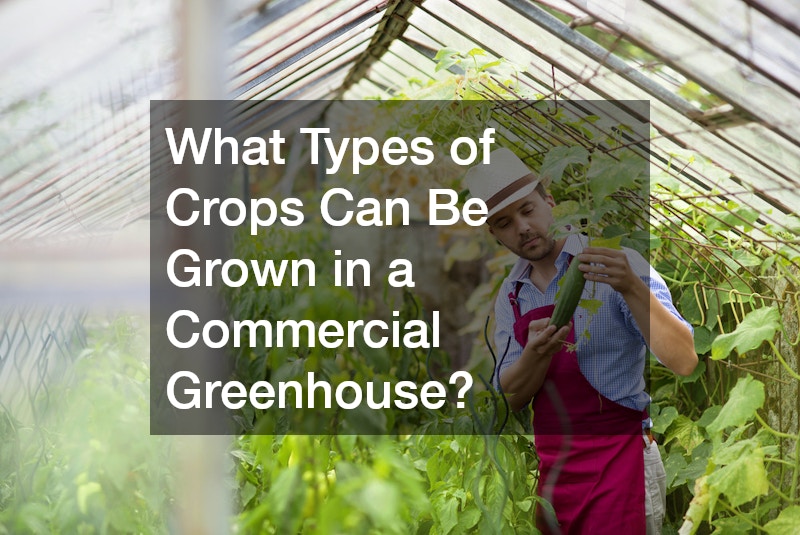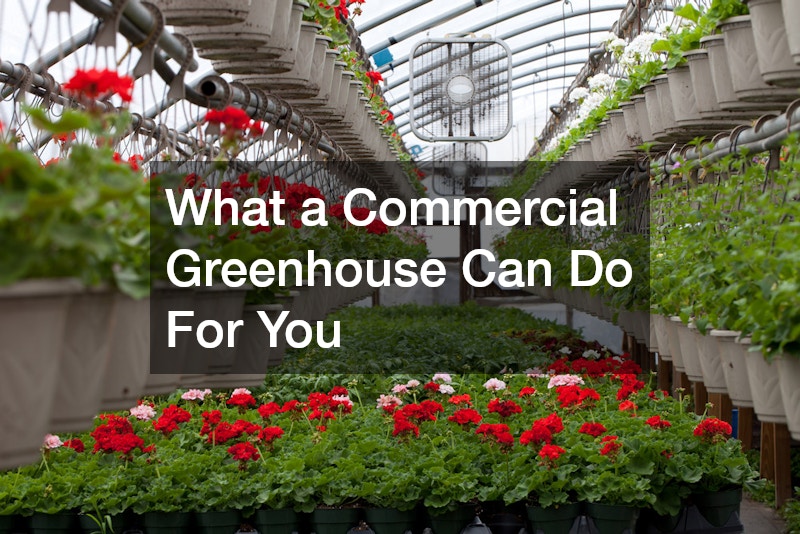Explore the benefits and possibilities a commercial greenhouse can offer, from boosting your productivity to maximizing profits and maintaining sustainable practices. A commercial greenhouse provides an environment where plants can thrive under optimal conditions, allowing for enhanced growth and health.
This makes it an ideal solution for those looking to enter or expand their presence in the agricultural market.
How Does a Commercial Greenhouse Improve Crop Production?
Optimizing Growing Conditions
Commercial greenhouses allow for control over critical environmental factors such as temperature, humidity, and light. This control enables plants to grow under optimal conditions, which is essential for enhancing plant growth and health. By taking advantage of these controlled environments, growers can fine-tune the conditions to match the specific needs of different crops. This adaptability increases overall yield and ensures that crops reach their full potential.
Year-Round Production
Unlike traditional farming, commercial greenhouses make it possible to produce crops year-round. They protect from adverse weather conditions, thereby ensuring continuity in crop cycles and a consistent supply of produce. This is particularly beneficial during the off-season, when natural growing conditions may not be conducive to plant growth. As such, greenhouses can help stabilize the market availability of crops throughout the year.
The Role of Controlled Environments
Greenhouses offer the advantage of controlled environments, which are crucial for maximizing crop production. By manipulating variables like light and moisture, growers can create ideal conditions that facilitate plant growth beyond natural limitations. This level of control also aids in preventing diseases and pests, reducing losses, and further stabilizing yields. As a result, these controlled environments significantly contribute to improved crop production efficiency.
What are the Economic Benefits of Using a Commercial Greenhouse?
Higher Yield and Profit Margins
The ability to manipulate growing conditions leads to higher yield per square foot in a commercial greenhouse. This directly impacts profitability by offering more produce to sell at market, enhancing the economic viability of such operations. When yields are maximized, growers can seize market opportunities more effectively. Consequently, investments in greenhouses often result in a high return due to these improved profit margins.
Reduction of Costs
Commercial greenhouses can significantly reduce costs related to pest management, water usage, and labor. Advanced techniques in integrated pest management eliminate the need for constant chemical interventions, thus driving down expenses and improving crop quality. Furthermore, optimized water and nutrient usage reduce the dependency on costly inputs, enhancing overall cost-efficiency. This cost-effectiveness is a crucial advantage in the competitive agricultural industry.
Predictable Returns
One of the benefits of commercial greenhouses is the predictability it introduces to agricultural ventures. Consistent production cycles and reduced weather-related disruptions offer a more stable financial outlook for growers. By producing a stable and reliable output, growers can better plan financially and take strategic actions to capitalize on market trends. This predictability is also key in securing long-term contracts and fostering partnerships.
How Can a Commercial Greenhouse Support Sustainable Practices?
Efficient Resource Management
Efficient resource management is one of the significant advantages of commercial greenhouses. With systems in place to conserve resources like water and energy, greenhouses ensure sustainable growth without compromising crop yield. Implementing practices such as drip irrigation and hydroponics, growers can make optimal use of limited resources. The result is an approach that is both environmentally and economically sustainable.
Reducing Carbon Footprint
Commercial greenhouse operations offer significant opportunities to reduce their carbon footprint. By integrating renewable energy solutions such as solar panels, greenhouses can produce the energy required for their operations in an environmentally friendly manner. Additionally, the low-impact materials used in modern greenhouse construction minimize environmental disruption. These considerations make greenhouses a key ally in pursuing holistic, sustainable practices in agriculture.
Waste Minimization
Through innovative techniques, commercial greenhouses are equipped to significantly minimize waste. Controlled environments reduce the need for chemical pesticides, which consequently lowers chemical runoff and soil degradation. Likewise, tailored irrigation and nutrient systems ensure minimal waste, fostering a more sustainable cycle of production. These waste-minimizing strategies bolster environmental sustainability in agricultural operations.
What Types of Crops Can Be Grown in a Commercial Greenhouse?
Variety of Common Greenhouse Crops
Commercial greenhouses provide the versatility to grow a wide variety of crops, such as tomatoes, lettuce, and bell peppers. These facilities cater to both traditional and emerging markets by offering diverse options for cultivation. The controlled environment ensures that even sensitive crops can thrive, providing a reliable supply of produce year-round. As demand for local and fresh produce increases, greenhouses are becoming a staple in modern agriculture.
Specialty and Exotic Plants
For growers looking to diversify, commercial greenhouses offer the capability to raise specialty and exotic plants that require distinct climatic conditions. These plants often command higher prices in niche markets, offering an exciting opportunity for growers to expand their product offerings. The ability to cultivate these unique plants broadens the scope of what can be grown, tapping into various consumer segments. Thus, specialty crops offer not only economic benefits but also market differentiation.
Adaptability Across Crop Types
The adaptable conditions in commercial greenhouses make it feasible to experiment with different types of crops. This adaptability includes both food and ornamental plants, meeting various market demands. Whether pursuing traditional, organic, or specialty growing, greenhouses offer the flexibility needed to switch between different farming strategies. This adaptability is vital in responding to changing consumer preferences and market demands.





